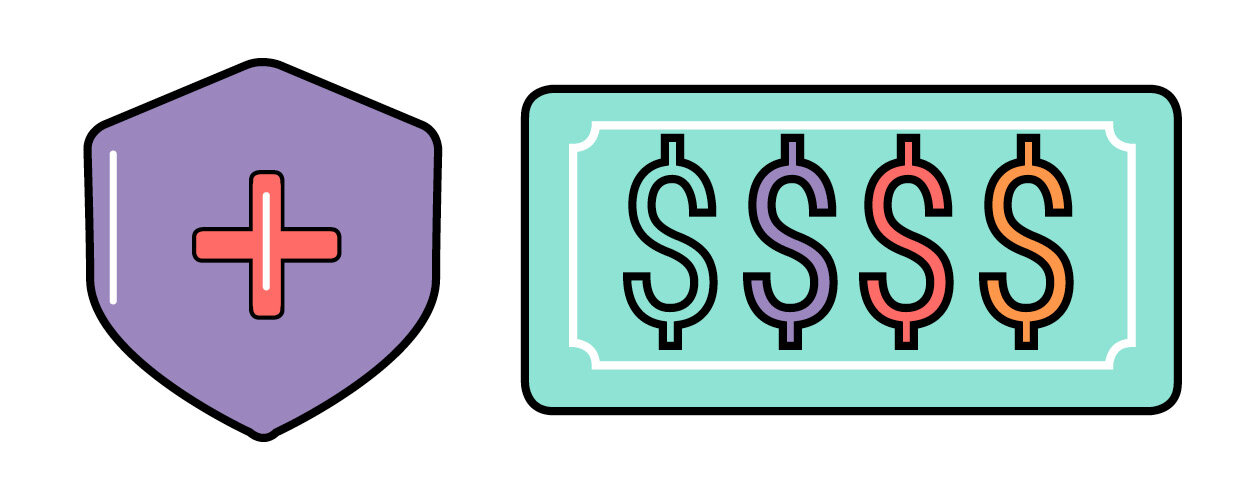For those of you long-time Healthcare Hustlers readers out there, you probably know quite a bit about medical insurance at this point. This time we are going to mix it up a bit, as we’ve had many requests recently to do an article about dental care.
While dental insurance sounds similar to medical insurance, there is one BIG difference...
Maximum Annual Limits
Instead of an out-of-pocket maximum, where insurance covers any costs beyond a certain point, dental insurance has a maximum annual limit that they will pay, meaning YOU are responsible for any cost beyond that maximum each year.
Said differently, if you spend more than your dental plan’s maximum annual limit, insurance will stop paying and you will pay for 100% of the cost.
The maximum limit is usually fairly low – often less than $2,000. For that reason, if your dentist recommends two root canals and six fillings, for example, you’ll want to ask for an estimate before committing to having all of that work completed at once. If the estimate is more than the maximum annual limit, you may want to consider talking to your dentist about options to delay some care until the next plan year.
What else do you need to know about dental insurance?
Classes of Benefits
There are a few “Classes of Benefits” that most care falls into.
Preventive/Routine
Usually includes a routine check-up, routine cleaning, and routine x-rays
Note: If your dentist says you need a “deep-cleaning” (scaling and root planing) this is not considered a preventive or routine service. Ask for the cost in writing before agreeing to any care.
Basic Services
Usually includes simple extractions, crowns, etc. Read your plan’s summary of benefits to understand what is covered and what your co-insurance or patient responsibility will be.
Major Services
Usually includes prosthodontics, implants, etc. Read your plan’s summary of benefits to understand what is covered and what your co-insurance or patient responsibility will be.
Orthodontia
Orthodontia is not covered on all plans, and if it is covered, it often comes with a LIFETIME maximum per individual or family. Similar to the maximum described above, this means that once you meet the maximum, the plan will stop paying.
Dental Insurance Tips
Read your summary of benefits to understand if there are limits on services. For example, routine x-rays are likely only covered once or twice per year, so if you have them done more frequently, you will be responsible for the cost.
Many dental providers now offer sedation dentistry or various types of anesthesia. Most dental insurance will only pay for services that they consider to be “usual and customary,” so ask your dentist to include the anesthesia in the cost estimate.
Exclusions
Certain services that may seem related to dental care are excluded from most plans. This usually includes TMJ treatment, snoring and/or sleep studies, sedation dentistry, and whitening or other cosmetic procedures. Check your plan exclusions before signing up for any treatments not clearly stated in your covered classes of benefits.
Don’t worry, there is good news!
Dentists are much more likely than medical providers to give you a printed estimate of the cost of care with your insurance benefits in advance of the service. If the dentist suggests more care, such as a filling, at the end of your preventive visit, ask them for a cost estimate with your insurance. If your dentist says they will not provide you with an estimate, seek a second opinion elsewhere.
Is dental insurance "worth it"?
Dental insurance is a separate plan from your medical insurance, and usually costs $20-$100 per pay period. Many people wonder if dental insurance is worth the cost, especially if they don't often go to the dentist, or if their dentist offers an annual plan of their own.
When deciding if dental insurance is cost-effective for you, think about the total cost of annual premiums and copays/co-insurance compared to the cost of services as a self-pay patient. Many dentists list the cash pay price of services on their website, or will provide the cost if you call and ask. Be sure to include the cost of anesthesia in your self-pay calculation. Use the following formulas:
Cost with Insurance = cost of insurance premiums + cost of services with insurance benefit (ex. copays and co-insurance for expected services) + any costs that exceed the maximum annual limit
Cost without Insurance = cost of services (including preventive visits) at the self-pay rate
Want to see a real life example from a blogger? Check out Max Out of Pocket’s personal “is it worth it” calculation here.
Even More Tips for Dental Care!
Remember that preventive care is covered at 100% on most dental plans. If you do not have dental insurance, you can still have preventive visits but you will pay the self-pay rate for them.
If you choose to purchase insurance, go to an in-network dental provider. Going out of network offers very little benefit.
If you choose to be a self-pay patient (without insurance), shop around for care. Dental care varies in price and offices are usually very open to discussing their prices with prospective patients. You could easily save up to $50 on a preventive cleaning by calling 2-3 different offices before scheduling.
Before paying any medical or dental bills, compare the bill to the Explanation of Benefits from the insurance company. You could easily save a few hundred dollars if you catch a billing mistake!
Read this article for free or low-cost dental care with or without insurance.

